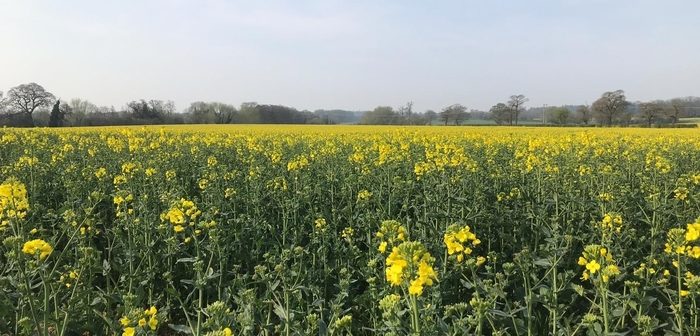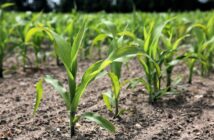Moisture and vigour are key to getting oilseed rape crops away, according to Shropshire-based farmer John Preece and his son Philip.
Working east-facing farmland at about 200m above sea-level can be challenging; autumn weather can be very wet, and soils slow to warm up in the spring.
As a result, the Preece’s have hard and fast rules on strategy, but make decisions according to conditions on the land at the time.
On the recommendation of James Hood of United Oilseeds, last year they followed early-maturing wheat variety Graham with oilseed rape hybrid LG Aurelia, and they are very pleased with the result so far.
LG Aurelia is one of the highest yielding hybrid varieties on the 2020-2021 AHDB Recommended List, with an extremely high gross output across all regions of the UK at 108% over control. These levels of output are backed up by excellent agronomic characteristics; TuYV resistance, pod shatter resistance and the highest disease resistance ratings of 8 for both light leaf spot and phoma.
“We had 5-6mm of rain and planted the rape on 6-7 September, with just enough moisture to get it away. It survived well and now as we go forward in spring, it is looking very healthy,” Philip says.
“In comparison, another variety drilled just a few days later on 10-11 September had to be ripped up, as it did not have the vigour or moisture to establish.”
Approach to drilling
Soils at Red Lion Farm are treated with sewage cake before planting first wheats. “The crops do better with the sewage cake underneath. When wheat is followed with oilseed rape, there is still some residue that helps get the crop established,” explains Philip.
“However, application of biosolids means more traffic on the land, so conditions need to be dry at application. We may look at using digestate in the future, if it is available.”
Soils are cultivated just enough to be able to drill without losing too much of the precious moisture, as this helps the crop establish more quickly. Planting is done with seed rate of 2.7kg/ha, and a starter fertiliser of 30kg/N, followed by a post-emergence herbicide.
“We prefer the later planting slot because we have found that although we have smaller plants going in to winter, it reduces the threat from cabbage stem flea beetle (CSFB),”says Philip.
Even so, the Preece’s have found the need to apply an insecticide, spraying it in the evenings to mitigate the impact on the environment. “We need to adapt to changing circumstances since the loss of neonicotinoids, so quicker vigour in our oilseed rape varieties is very important.”
When choosing a variety the Preece’s look at the overall agronomy package, looking for vigour and disease resistance to stem canker and phoma.
“We are very happy with our move to growing LG Aurelia, and will definitely grow the variety again, and this year we may also try it behind spring barley.”
PANEL How important is vigour?
Beckii Gibbs, seed manager with United Oilseeds, considers vigour to be one of the most important traits in any oilseed rape variety, along with a strong resistance to disease.
“Choose a trait-loaded variety that demonstrates good autumn and spring vigour as it will help your crop grow away from flea beetle and establish quickly,” she advises. “On this basis, LG Aurelia is a true stand out variety, as it was rated the top variety for vigour in the AHDB 2019 harvest trials.”
“It is a trait-loaded variety that provides high resistance to pod shatter, TuYV, light leaf spot and stem canker – in fact it’s the only variety with a twin “8” ratings for light leaf spot and stem canker on the AHDB Recommended List 2020-21.”
“Combined with a high gross output, this variety is clearly a major step-up in oilseed rape growing.”




